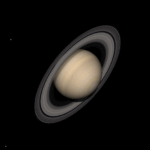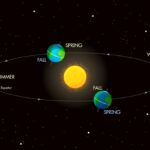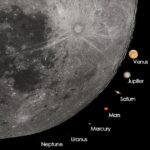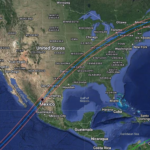
Whenever I’ve had the privilege of showing a telescopic view of Saturn to someone who has never seen it before, the almost inevitable response is disbelief. “Is that real?” Especially if its beautiful rings are highly tilted, the view is…

Whenever I’ve had the privilege of showing a telescopic view of Saturn to someone who has never seen it before, the almost inevitable response is disbelief. “Is that real?” Especially if its beautiful rings are highly tilted, the view is…

It’s a bird! It’s a plane! No, it’s 3I/ATLAS, the third known object to visit our solar system from outside it. The “3” in the name indicates that it is the third such object, the “I” that it is interstellar,…

On January 4th, 2025 at 8:28 a.m. EST, Earth will reach perihelion, the point in its orbit when it is closest to the sun. Then why is it so cold, at least in the northern hemisphere? Winter—indeed all seasons—don’t depend…

There are a few astronomical events that, even though they recur, are once-in-a-lifetime occasions, separated by too much time for all but the luckiest to see twice. For me, Halley’s Comet in 1986 was such an occasion. I lifted my…

Why does something look big? Is it because it actually IS big, or is it because it is close to us? The closest celestial body to the Earth is our Moon. It’s an object that’s very easy to see without…

A little over a month away now! Rather than write a lengthy post, I’m just going to address the main questions people usually have. The sun is going to be 90% obscured at my home. Is it worth traveling to…

When I would take my astronomy students to Lynchburg College’s (now the University of Lynchburg) Belk Observatory in rural Bedford County, Virginia, I was surprised at how many of them had never seen the Milky Way. Growing up in urban…
Supermoon! Blue moon! Full moon! People do get excited about this, at least if media coverage and social media posts are any indication. Do I? Well, a full moon means I can see to put the garbage out more easily…

I have often joked that when I am asked a question that begins with “I saw this really bright thing in the sky…” my answer has a 90% chance of being right if I just say “Venus.” It is the…

Meteor showers both are—and are not—among the most predictable of astronomical events. The Lyrid meteor shower is predicted to peak at 9:06 p.m. EDT on the night of April 22nd. Why are they predictable? Meteor showers occur when the Earth…